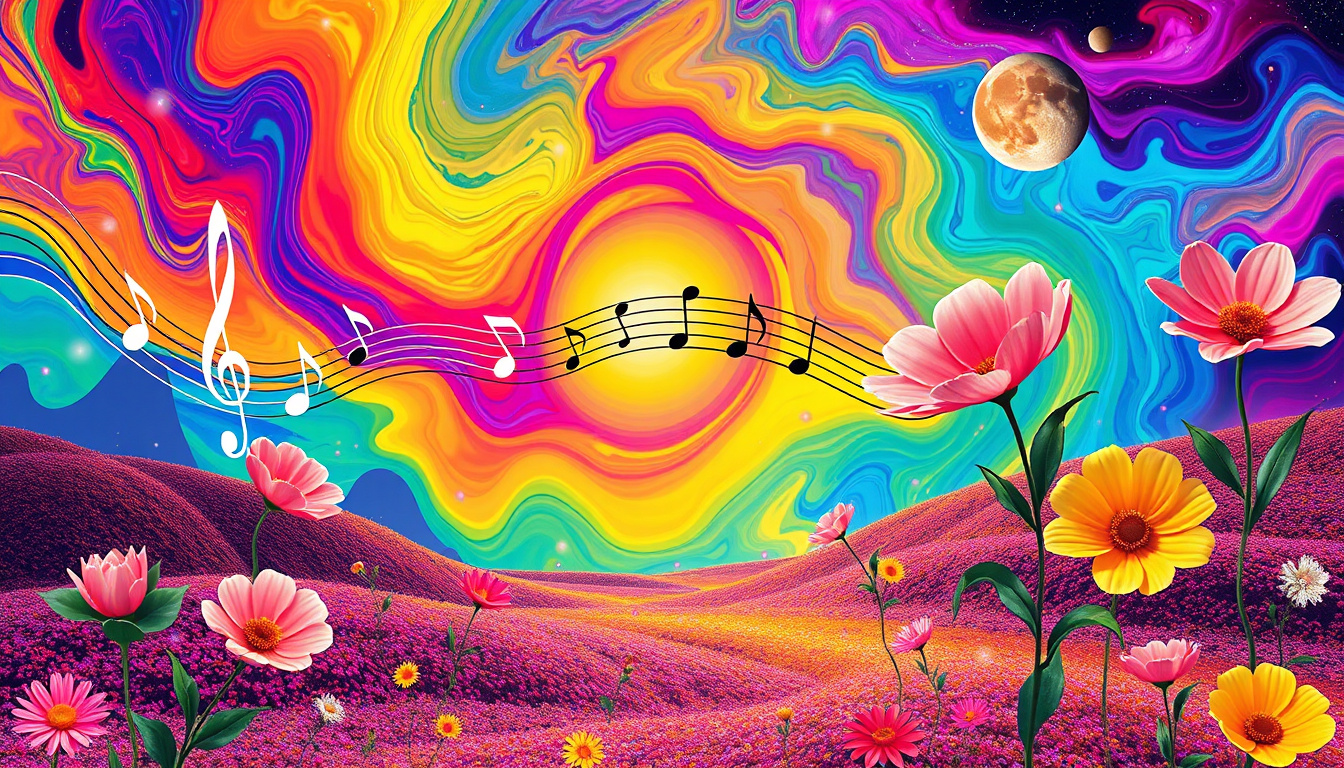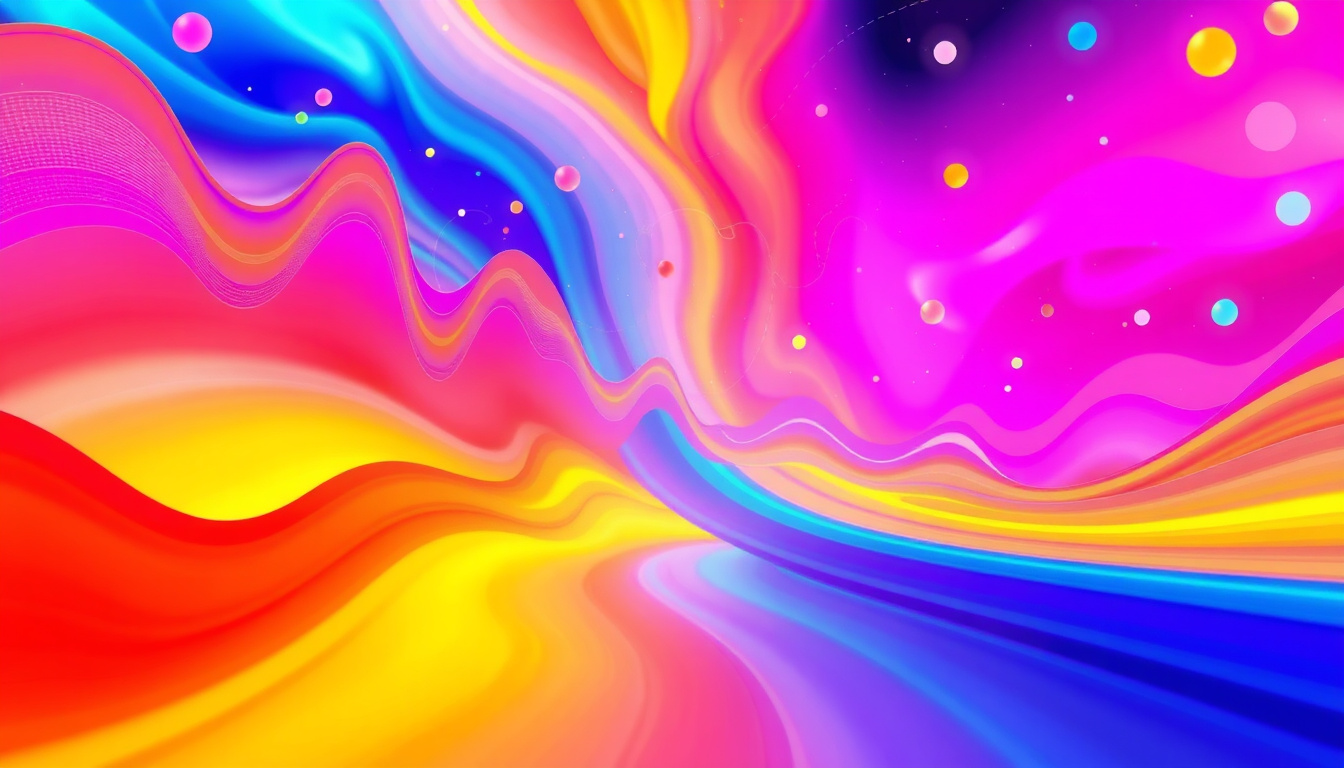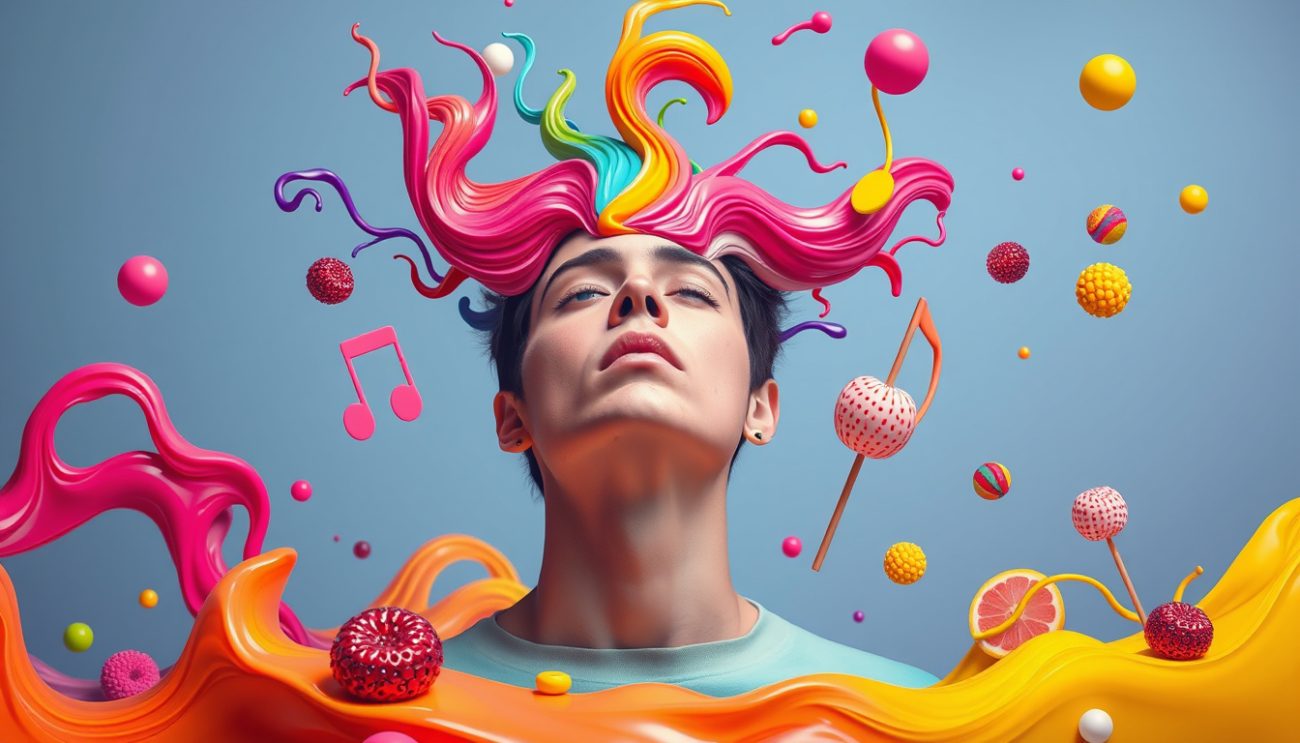Welcome to the captivating world of synesthesia! If you’ve ever wondered what it feels like to taste colors or hear shapes, you’re in for an extraordinary journey. In this article, titled ‘Synesthesia for Beginners: Tasting Colors & Hearing Shapes,’ we will delve into the intriguing phenomenon of synesthesia, exploring its various types, the science behind it, and the fascinating personal experiences of those who live with this unique sensory condition. Whether you’re a budding enthusiast or simply curious, this guide will help you understand synesthesia and perhaps inspire you to embrace your own sensory perceptions.

Key Takeaways
- Synesthesia is a neurological condition where one sense involuntarily triggers another, like tasting colors or hearing shapes.
- There are various types of synesthesia, including grapheme-color synesthesia and sound-color synesthesia, each offering unique sensory experiences.
- Research into the science of synesthesia reveals underlying neural pathways and genetics that contribute to these experiences.
- Personal stories from synesthetes showcase the diversity of synesthetic experiences and how it influences their perception of the world.
- You can enhance your own synesthetic experience through creative exercises, mindfulness, and exploring art and music.
What is Synesthesia?
Synesthesia is a fascinating neurological condition that affects how the brain processes information, compelling some individuals to experience a blending of the senses. For those exploring the concept, particularly through the lens of ‘Synesthesia for Beginners: Tasting Colors & Hearing Shapes,’ it offers a unique insight into how perception can vary from person to person. Synesthetes, or individuals with synesthesia, might ‘taste’ colors when they see them or ‘hear’ shapes when they come across particular sounds. This intriguing phenomenon not only challenges our understanding of sensory perception but also enriches the experiences of those who live with it. Each synesthetic experience is highly personal, leading to a vibrant tapestry of interactions with the world, which can manifest in myriad ways, such as associating numbers with colors or experiencing scents through sounds. Understanding synesthesia opens the door to appreciating the complexities of human perception and invites us to explore the extraordinary ways in which our minds can interpret reality.
Types of Synesthesia: An Overview
Synesthesia is a fascinating neurological phenomenon that merges the senses in unique ways, allowing individuals to experience the world through a multi-sensory lens. For beginners trying to understand this captivating topic, it’s essential to explore the different types of synesthesia, which can include tasting colors and hearing shapes. One common form is grapheme-color synesthesia, where individuals perceive specific letters or numbers as inherently colored. This type often leads to vivid associations between colors and textual characters, providing a rich tapestry of perception. Another engaging type is chromesthesia, where sounds trigger color sensations, enabling synesthetes to visualize music or sounds in vibrant hues. Additionally, there is tactile-synesthesia, where physical sensations can evoke specific tastes or smells. Understanding these variations helps demystify synesthesia for beginners, illustrating how this unusual condition expands the boundaries of human perception in delightful and complex ways.
‘The senses are not separate; they are just lenses through which we perceive the world. It is a marvelous symphony of colors, sounds, and tastes that connects us all.’ – Unknown

The Science Behind Synesthesia
Synesthesia for beginners: tasting colors & hearing shapes is a fascinating topic that dives into the unique, cross-sensory experiences that some individuals have. Synesthesia is a neurological phenomenon where stimulation of one sensory pathway leads to automatic, involuntary experiences in a second sensory pathway. For example, a synesthete might hear music and simultaneously see vibrant colors or taste a specific flavor when viewing certain shapes. This condition varies widely, with many experiencing it in various forms, such as grapheme-color synesthesia, where numbers or letters trigger an association with specific colors. Understanding the science behind synesthesia not only helps us appreciate these extraordinary perceptions but also opens a window into how our brain processes sensory information. For those curious about this compelling intersection of senses, exploring synesthesia can provide an eye-opening experience into the complexities of human cognition.
Experiencing Synesthesia: Personal Stories
Synesthesia, often described as a blending of the senses, is a fascinating neurological phenomenon that allows individuals to experience the world in unique and vibrant ways. For those diving into the intriguing realm of synesthesia for beginners, personal stories can provide insightful perspectives on what it feels like to taste colors and hear shapes. One vivid account comes from a graphic designer who, when creating artworks, perceives colors in a symphonic manner, telling how the bright reds and blues echo the notes of a beautiful melody. Another story features a musician who describes how certain chords evoke specific shapes that dance behind their eyes, adding a visual symphony to each performance. These personal narratives not only illustrate the diverse experiences of synesthetes but also invite readers to appreciate the beauty of sensory perception that transcends traditional boundaries. For anyone curious about how sensory experiences can intertwine, exploring synesthesia opens up a captivating world where tasting colors and hearing shapes becomes an everyday reality.

How to Enhance Your Synesthetic Experience
Synesthesia for beginners: tasting colors & hearing shapes is an intriguing exploration of how our senses can intertwine, creating vibrant experiences that go beyond the norm. To enhance your synesthetic experience, consider engaging in activities that promote sensory crossover. For instance, listening to music while painting can stimulate your ability to feel colors through sound, as certain melodies may evoke specific shades for you. Experiment with taste by pairing different foods with colors and shapes; try visualizing a color while savoring a flavor to deepen your sensory connections. Incorporating mindfulness and meditation can also help you tune into your synesthetic perceptions, allowing you to fully embrace and understand this fascinating phenomenon. By cultivating an environment rich in sensory stimuli and being open to new experiences, you can enrich your synesthetic journey, transforming how you perceive the world around you.
Frequently Asked Questions
What is synesthesia?
Synesthesia is a neurological condition where stimulation of one sensory pathway leads to automatic, involuntary experiences in a second sensory pathway. For example, individuals with synesthesia may see colors when they hear music or associate specific tastes with certain words.
What are the different types of synesthesia?
There are several types of synesthesia, the most common include grapheme-color synesthesia (where letters or numbers evoke colors), sound-color synesthesia (where sounds trigger visual experiences), and lexical-gustatory synesthesia (where words create tastes in the mouth).
Is synesthesia a disorder or an enhanced ability?
Synesthesia is considered a unique cognitive phenomenon rather than a disorder. Many individuals with synesthesia view it as an enhancement of their sensory experiences and creativity, rather than a hindrance.
Can people with synesthesia enhance their experiences?
Yes, there are ways to enhance synesthetic experiences. This can include exposure to various forms of art, music, and color, as well as mindfulness practices that help individuals connect more deeply with their senses.
How can I learn more about synesthesia?
To learn more about synesthesia, consider reading books dedicated to the subject, joining synesthesia communities online, or exploring documentaries that feature personal stories from individuals with synesthesia.
